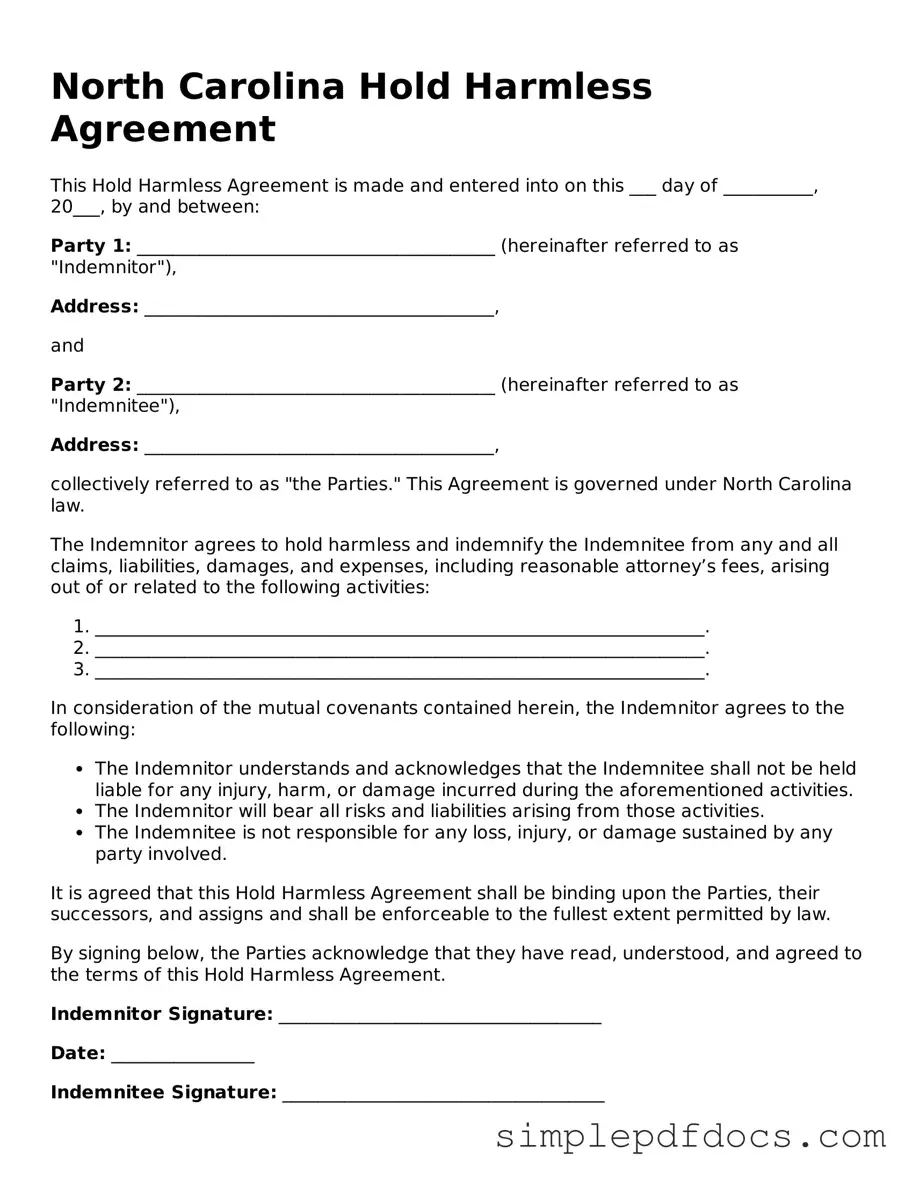Legal Hold Harmless Agreement Document for the State of North Carolina
The North Carolina Hold Harmless Agreement is a legal document designed to protect one party from liability for any potential damages or injuries that may occur during a specified activity or event. This agreement outlines the responsibilities of each party and ensures that one party will not hold the other accountable for certain risks. Understanding its purpose and implications is crucial for anyone engaging in activities that could expose them to legal claims.
Get Document Here
